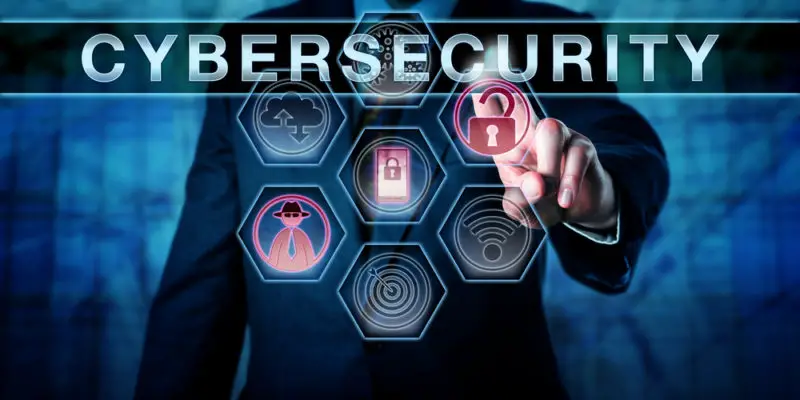Phishing risk assessment is essential in today’s digital landscape, where cyber threats continue to evolve and target individuals and organizations.
This article delves into phishing, exploring its different types of attacks and the importance of simulated attack testing.
Furthermore, it examines the significance of risk analysis and reporting in mitigating the potential damages caused by phishing incidents.
This article aims to equip readers with valuable insights into phishing risk assessment by providing an informative, precise, and analytical perspective.

What Is Phishing?
Risk assessment is necessary to identify and evaluate potential risks associated with phishing attacks.
By conducting a thorough assessment, organizations can better understand the specific threats they face and the potential impact on their operations.
This allows for developing effective strategies and countermeasures to mitigate the risks and protect sensitive information from being compromised.
Why Is Risk Assessment Necessary?
Risk assessment is essential to ascertain the vulnerabilities and threats within a system or organization. It allows organizations to identify and prioritize risks associated with phishing attacks and develop appropriate mitigation strategies.
- Cyber risk assessment: Assessing the risk level associated with phishing attacks is crucial for organizations to understand the potential impact on their systems and data.
- Security risk analysis: A thorough analysis of existing security measures helps identify any gaps or weaknesses that phishing attacks may exploit.
- Future attack prevention: By conducting risk assessments, organizations can proactively identify potential vulnerabilities and implement necessary controls to prevent future attacks.
Incorporating phishing simulations and user awareness training into the risk assessment process can help organizations cultivate a security culture where employees are educated and vigilant against phishing threats.
Risk assessment is vital in safeguarding organizations against the real risks of phishing attacks.
Types of Phishing Attacks
Email phishing involves sending fraudulent emails that appear to come from a legitimate source to deceive recipients into sharing sensitive information.
Whaling attacks target high-profile individuals, such as CEOs or executives, with the goal of gaining unauthorized access to their personal or company information.
Lastly, business email compromise involves an attacker impersonating a trusted individual or organization to trick employees into transferring funds or disclosing confidential information.
Email Phishing
Email phishing is a prevalent cyber threat that involves the use of deceptive emails to trick individuals into revealing sensitive information. It is a method commonly employed by hackers to gain unauthorized access to personal and organizational data.
The impact of email phishing attacks can be devastating, leading to financial loss, reputational damage, and compromised security. To evoke emotion in the audience, it is important to highlight the potential consequences of falling victim to email phishing attacks.
These include identity theft, financial fraud, and unauthorized access to sensitive information. Email phishing attacks can also be a gateway for further cyber-attacks, such as malware installation or network breaches.
Organizations must prioritize email phishing risk assessment by implementing security measures, educating users about the risks, conducting regular testing, and implementing robust email filtering systems to detect and block malicious emails and links.
Whaling Attacks
Whaling attacks, CEO fraud, or business email compromise target high-level executives and employees with access to sensitive information. These attacks aim to deceive them into authorizing fraudulent transactions or revealing confidential data.
These attacks pose a significant threat to organizations and require careful consideration during the phishing risk assessment. Whaling attacks employ sophisticated social engineering techniques and exploit the trust and authority associated with senior management positions.
Organizations should focus on developing a strong cybersecurity culture to mitigate the risk of whaling attacks. This culture should emphasize vigilance and awareness among employees, particularly those in leadership roles.
Senior management should lead by example and actively participate in cybersecurity initiatives.
Additionally, organizations should collaborate with regulatory bodies and law enforcement agencies. This collaboration will help them stay updated on evolving cyber risks and share information about potential threats.
Adopting a proactive approach to combating whaling attacks, organizations can better protect themselves from the actions of cybercriminals.
Business Email Compromise
Business Email Compromise, also called CEO fraud or whaling attacks, is a cyber attack that specifically targets high-level executives and employees with access to sensitive information. This attack aims to deceive them into authorizing fraudulent transactions or revealing confidential data.
This sophisticated attack technique has become increasingly prevalent, leading organizations to mitigate the risk proactively.
To combat business email compromise, companies are implementing user training programs. These programs aim to educate employees about the dangers of phishing emails and how to identify and report potential threats.
By providing employees with the knowledge and skills to recognize and respond to phishing attempts, organizations can reduce the likelihood of falling victim to these attacks.
Additionally, organizations are conducting phishing assessment exercises. These exercises, such as phishing simulation risk assessments, help gauge employees’ susceptibility to social engineering tactics.
By simulating real-world phishing attacks, organizations can identify areas of weakness and develop targeted training and awareness campaigns to address these vulnerabilities.
Cyber risk assessment services also identify vulnerabilities and develop strategies to prevent phishing attacks. These services help organizations identify potential weaknesses in their systems and processes, allowing them to implement appropriate security measures to protect against business email compromise.
Through attack awareness training and enhanced security measures, businesses can better defend against these targeted attacks on employees.
Educating employees, conducting phishing assessments, and utilizing cyber risk assessment services, organizations can strengthen their defenses and reduce the risk of falling victim to business email compromise.
Simulated Attack Testing
Simulated attack testing, also known as penetration testing or ethical hacking, is a method used to assess the vulnerability of an organization’s security systems by imitating real-life cyber attacks.
This testing involves simulating various attacks, such as phishing emails or social engineering techniques, to identify potential weaknesses and evaluate the effectiveness of existing security measures.
The benefits of simulated attack testing include providing valuable insights into an organization’s security posture, enabling proactive measures to address vulnerabilities, and enhancing employees’ overall security awareness and preparedness.
However, it is important to note that simulated attack testing also has limitations. For example, it cannot replicate all possible attack scenarios and there is the potential for false positives or negatives, which may impact the accuracy of the assessment.
How It Works
Phishing risk assessment involves analyzing the mechanisms and techniques used by cybercriminals to deceive individuals and gain unauthorized access to sensitive information.
Organizations must understand how phishing attacks work to prevent and mitigate such threats effectively.
Security teams often conduct simulated attack testing to assess the risk of phishing attacks. This involves sending employees simulated phishing emails containing malicious links or attachments.
The goal is to see if users fall for the simulated attack, click on malicious links, or provide sensitive information.
During the testing, security teams can gather valuable insights into the types of phishing attacks that could potentially affect their organization. They can assess the scope of user vulnerability and identify areas that require additional security measures or user training.
Successful phishing attacks can lead to significant security incidents, so regular assessments and updates to security protocols are crucial in maintaining a robust defense against phishing threats.

Benefits of Simulated Attack Testing
One advantage of conducting simulated attack testing is that it allows organizations to gain valuable insights into potential vulnerabilities and areas of improvement in their security protocols.
Organizations can identify weaknesses in their systems and processes by simulating various types of cyber attacks, such as phishing and ransomware attacks, and take proactive measures to address them.
This approach helps organizations avoid cyber criminals and protect their sensitive data and resources.
To illustrate the benefits of simulated attack testing, consider the following table:
| Benefits of Simulated Attack Testing |
|---|
| Provides insights into attack vectors |
| Identifies weaknesses in security protocols |
| Helps prioritize security investments |
| Enables proactive threat mitigation |
| Enhances employee training and awareness |
Simulated attack testing goes beyond regular phishing assessments by simulating real attacks and evaluating the organization’s response.
This testing provides a more comprehensive and accurate assessment of an organization’s cybersecurity posture, allowing them to effectively manage and mitigate phishing risk.
Organizations can significantly improve security resilience and readiness by conducting simulated attack testing and complimentary phishing risk assessments.
Limitations of Simulated Attack Testing
A potential limitation of simulated attack testing is that it may not accurately replicate the complexity and sophistication of real-world cyber attacks.
While simulated attacks can provide valuable insights into an organization’s phishing risk assessment, they may fail to capture the full range of techniques and strategies employed by actual attackers.
Simulated attack messages may not be as convincing or deceptive as real phishing emails, which can exploit human error and circumvent security measures.
Additionally, simulated attacks may not account for an organization’s unique security posture, culture, and internal policies, which can influence an individual’s response to phishing attempts.
Moreover, simulated attacks tend to focus on common threats, potentially overlooking emerging or targeted attacks that are more sophisticated and difficult to detect.
Therefore, it is important to supplement simulated attack testing with other security measures to ensure comprehensive protection against phishing threats.
Risk Analysis and Reporting
This discussion will focus on several key points related to risk analysis and reporting in cybersecurity.
Firstly, assessing risk levels through penetration testing is crucial in identifying vulnerabilities and potential threats. This process involves simulating real-world attacks to identify weaknesses within a system.
Secondly, developing a comprehensive plan for reducing risks based on penetration testing findings is essential. This plan should outline specific actions and strategies to mitigate identified vulnerabilities.
Lastly, creating reports on the organization’s cybersecurity posture is necessary for monitoring and communicating the status of security measures.
Automated tools can facilitate risk analysis by efficiently and accurately assessing potential risks and vulnerabilities.
Assessing Risk Levels Through Penetration Testing
Penetration testing is a method used to assess risk levels by simulating real-world attacks on computer systems and networks. It involves ethical hackers attempting to exploit vulnerabilities in an organization’s infrastructure to identify potential security weaknesses.
To assess risk levels effectively, penetration testing incorporates various techniques and strategies. These include social engineering, where hackers attempt to trick employees into divulging sensitive information through phishing emails or phone calls.
Additionally, penetration testing may involve testing the security of wireless networks, web applications, and mobile devices.
Organizations can obtain valuable insights into their security posture and detect weaknesses by conducting penetration testing.
This enables them to make informed decisions on implementing security measures, such as updating policies and procedures, improving network infrastructure, and providing real-time threat updates..
Ultimately, penetration testing helps organizations stay ahead of the evolving threat landscape and protect their systems and data.
Developing a Plan for Reducing Risks
To effectively reduce risks, organizations should focus on developing a comprehensive plan that addresses vulnerabilities identified through penetration testing and includes measures for enhancing security infrastructure and updating policies and procedures.
This plan should encompass various aspects such as real-time threat updates, antiphishing measures, website risk assessment, and attack surface management. It should also consider the assets at risk and the organization’s attitude toward risk.
Organizations can proactively identify and mitigate potential risks by incorporating simulated phishing attacks and advanced email threat detection. Furthermore, the plan should serve as a base for risk assessment and be integrated into broader risk management programs.
This holistic approach ensures that organizations thoroughly understand their vulnerabilities and are equipped to effectively reduce the risks associated with phishing attacks.
| Aspect | Description |
|---|---|
| Realtime Threat Updates | Regular updates on emerging threats and vulnerabilities to ensure that security measures are up-to-date. |
| Antiphishing Measures | Strategies and technologies implemented to detect and prevent phishing attacks. |
| Website Risk Assessment | Evaluation of website vulnerabilities and potential risks associated with phishing attacks. |
| Attack Surface Management | Ongoing monitoring and management of an organization’s exposure to potential attacks. |
Creating Reports on Cybersecurity Posture
Creating reports on cybersecurity posture requires organizations to gather and analyze data on their security measures, vulnerabilities, and ongoing monitoring efforts.
These reports serve as a crucial tool for assessing the effectiveness of an organization’s cybersecurity measures and identifying areas of improvement.
The process begins with conducting a comprehensive phishing risk assessment, which involves evaluating the organization’s susceptibility to phishing attacks and the effectiveness of existing countermeasures.
This assessment helps determine the level of risk posed by phishing attacks and guides the development of appropriate mitigation strategies.
The gathered data is then analyzed to identify patterns, trends, and potential vulnerabilities. This analytical approach enables organizations to make informed decisions regarding cybersecurity posture and prioritize resources to address the most critical areas.
By regularly creating and analyzing these reports, organizations can proactively manage their cybersecurity risks and enhance their overall security posture.
Utilizing Automated Tools for Risk Analysis
Automated tools are crucial in objectively and comprehensively analyzing an organization’s cybersecurity posture. In the context of phishing risk assessment, these tools enable organizations to identify and evaluate potential risks associated with fraudulent activities.
By automating the risk analysis process, organizations can efficiently assess the effectiveness of their security programs in mitigating cyber risks.
These tools can detect and analyze sophisticated phishing attacks, often used as a primary attack vector against employees.
They also aid in attack surface monitoring by scanning and analyzing various digital channels, such as email, to identify potential vulnerabilities and threats.
Additionally, automated tools allow for the efficient analysis of bulk email, commonly used for phishing campaigns.
Organizations can use these tools to enhance cybersecurity by proactively identifying and addressing potential vulnerabilities and threats.
Frequently Asked Questions
How can organizations effectively educate their employees about recognizing and preventing phishing attacks?
Organizations can effectively educate their employees about recognizing and preventing phishing attacks by implementing comprehensive training programs that include phishing simulations, regular updates on evolving techniques, and clear guidelines for reporting suspicious emails.
What common signs or red flags indicate a phishing email or website?
Common signs of a phishing email or website include misspellings or grammatical errors, generic greetings, urgent or threatening language, requests for personal information, suspicious URLs, and unexpected attachments or links.
Are there any legal consequences or penalties for individuals or organizations involved in phishing attacks?
Individuals or organizations involved in phishing attacks may face legal consequences and penalties. These can include fines, imprisonment, and civil lawsuits. Legislation varies by country, but many jurisdictions have specific laws addressing phishing and cybercrime.
What emerging trends or techniques in phishing attacks should organizations be aware of?
Emerging trends in phishing attacks include spear phishing, which targets specific individuals or organizations, and whaling, which targets high-ranking executives.
Other techniques include social engineering, where attackers manipulate victims into divulging sensitive information and using advanced technology to create convincing fake websites or emails.
How can organizations ensure that their anti-phishing measures are updated and effective against new threats?
Organizations can ensure the effectiveness of their anti-phishing measures against evolving threats by regularly updating and testing their systems, staying informed about emerging trends, and implementing robust security protocols based on industry best practices.

Conclusion
Phishing risk assessment is crucial to identify and mitigate potential cyber threats. Organizations can better protect themselves by understanding what phishing is and the various types of attacks.
Simulated attack testing allows proactive measures to be taken, identifying vulnerabilities and strengthening security.
Risk analysis and reporting provide valuable insights into potential risks and enable informed decision-making.
Assessing phishing risks is crucial in protecting against cyber threats and maintaining the confidentiality of sensitive data.

Chris Ekai is a Risk Management expert with over 10 years of experience in the field. He has a Master’s(MSc) degree in Risk Management from University of Portsmouth and is a CPA and Finance professional. He currently works as a Content Manager at Risk Publishing, writing about Enterprise Risk Management, Business Continuity Management and Project Management.

